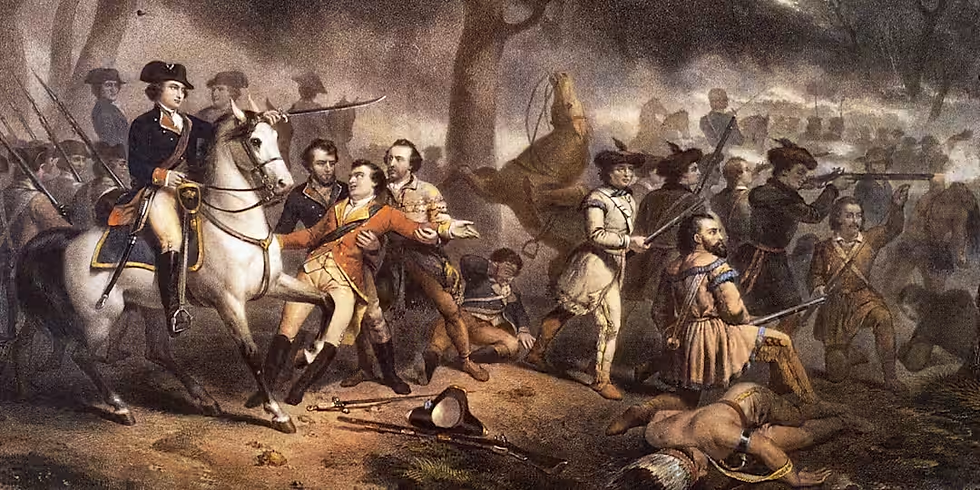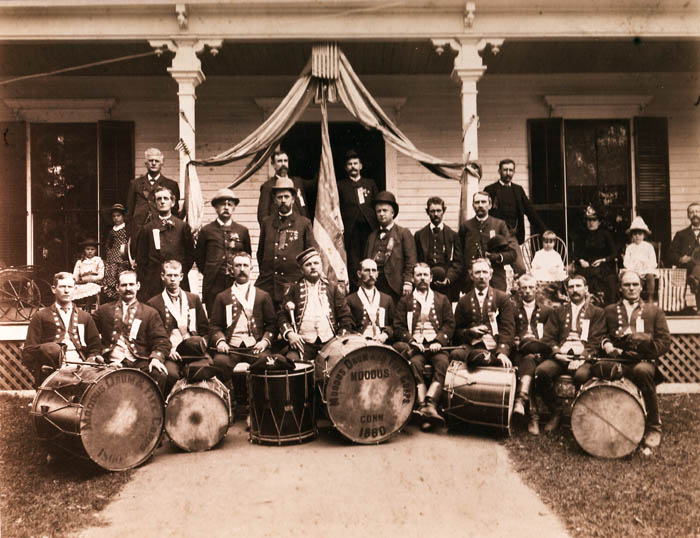Early Life on Springfield Mountain 1730 - 1750
- David Bourcier
- Nov 6
- 7 min read

The Settlement of Springfield Mountain
The early settlers of the “Outward Commons,” or “Springfield Mountain” as it was once known, were hardy, determined, and adventurous men and women. This vast wilderness, today, the towns of Wilbraham, Hampden, and Ludlow- tested their strength and spirit daily. Life was far from easy. The soil was stubborn, and the challenges of frontier living were constant companions.
The land itself had deep roots in early colonial history. In 1674, William Pynchon, Elizur Holyoke, and others purchased the Outward Commons from the local Native Americans. This area became part of Springfield, for which Pynchon had received the original deed in 1636, granting him ownership of much of what is now Springfield, West Springfield, Longmeadow, and Agawam. In exchange, he paid the Agawam people 18 fathoms of wampum, 18 coats, and several hoes, hatchets, and knives.
On February 3, 1685, land grants were issued to several proprietors who, for various reasons, never settled them. The grants came about largely out of fear that Governor Sir Edmund Andros would revoke the colony’s charter, thereby causing all unclaimed lands —the Outward Commons —to revert to the Crown.
This land, rich with wildlife, provided early settlers with both challenge and abundance. Deer, wild turkeys, squirrels, beavers, muskrats, minks, and foxes roamed the woods, while rivers and streams teemed with trout, pickerel, and even salmon weighing up to twelve pounds. Bears appeared only occasionally, but “wildcats” were common enough that the Town of Springfield offered bounties for their destruction.
The First Settlers
In the summer of 1730, Nathaniel Hitchcock became the first to venture into the Outward Commons from the Springfield settlement along the Connecticut River. He cleared two acres of land and built a small log hut on the west side of what is now Main Street, Wilbraham (603 Main Street). After sowing wheat, he returned to Springfield for the winter.
In May 1731, Hitchcock returned with his wife, Hannah Taylor, and their infant daughter, also named Hannah. They became the first year-round residents of Springfield Mountain and went on to have four more children—Nathaniel, Mary, Gideon, and Silas. Their nearest neighbors were nine miles away in Springfield. Nathaniel worked tirelessly through the seasons—planting, harvesting, cutting hay, and storing corn—finding comfort in the music of his wife’s voice and the laughter of his children through long winter nights.
The following spring brought not only robins and bluebirds, but welcome company. Noah Alvord and his wife, Hannah Burt, arrived with their two children, Hannah and Moses, settling just 600 feet south of the Hitchcocks (648 Main Street). They later had two more children, Aaron and Elizabeth. Sadly, none of the four would leave descendants.
The Hitchcocks and Alvords became inseparable, helping one another with every task and hardship. When Noah built his house, Nathaniel lent a hand; when Nathaniel needed help with his crops, Noah was there in return. Their wives shared the daily burdens of family and isolation, finding strength in friendship.
Word soon reached Springfield that the land was fertile and promising for life. In 1733, Daniel Warner and Sergeant Moses Burt joined the settlement. Warner, his wife Jerusha Hitchcock, and their first child, Comfort, took up residence north of the Hitchcocks (576 Main Street). Comfort Warner holds the distinction of being the first child born on Springfield Mountain. The Warners went on to have seven more children. Sgt. Burt and his wife, Hannah Warriner (651 Main Street), raised four children: Hannah, Eunice, Moses, and Lovice.
In 1734, Nathaniel Warriner and his wife Margaret Merrick settled nearby (599 Main Street). They had no children but left a lasting legacy—Nathaniel became a leading citizen and, upon his death in 1780, bequeathed funds for the town’s ministry and school.
Growth and Community
By 1737, education had already become a priority. That year, the Town of Springfield appropriated three pounds for the support of a school in the Outward Commons.
Other settlers soon followed: Thomas Glover, Samuel Warner, Samuel Stebbins, David and Thomas Merrick, David and John Jones, Abel Bliss, Daniel Lamb, David Warriner, Isaac Brewer, David Chapin, Moses Bartlett, and Nathaniel Bliss. By 1741, twenty-four to twenty-six families lived in the area.
In the southern part of today’s Hampden, Stephen Stebbins was the first to settle near the Scantic River in 1741. His brother Aaron Stebbins built nearby, and between them, Lewis Langdon erected the first sawmill in the Outward Commons, ushering in framed houses to replace the crude log homes.
These early homes were simple and unfinished, often with rough plastered walls, small windows, and sparse furnishings. Yet from the higher elevations, settlers could look westward across unbroken forest to see the thin columns of smoke from the Connecticut River Valley, reminders of the community they had left behind and the meeting house nine miles away.
Becoming a Precinct
Devout and determined, the settlers soon sought their own place of worship. A petition to become a separate precinct of Springfield was approved by Governor Jonathan Belcher on January 6, 1741. The “Outward Commons on the east side of the Great River” officially became the Fourth Precinct of Springfield.
The first meeting was held on March 12, 1741, at David Merrick’s home, where officers were elected, including Isaac Brewer as Treasurer and Nathaniel Warriner as Collector. Soon after, they called Rev. Noah Merrick to serve as minister. He accepted the position on May 26, 1741, and the church was organized the following month.
The ordination service was planned for June 24, 1741, beneath a great oak near Daniel Warner’s home. But as storms gathered, the ceremony was hastily moved to Nathaniel Warriner’s barn, where Reverend Merrick was formally ordained—the beginning of the town’s long spiritual tradition.
Building a Town
In 1742, a house was built for Reverend Merrick on Wigwam Hill (1347 Tinkham Road), and by 1744, he had married Abigail (Fisk) Brainerd of Haddam, Connecticut. Together, they raised seven children, along with Abigail’s daughter from her previous marriage.
By 1748, after much debate, the first Meeting House was completed near Merrick’s home. Until then, services had been held in Nathaniel Hitchcock’s house.
Efforts to become independent from Springfield began soon after. On January 16, 1749, a committee petitioned for separation, though it would take fourteen more years before success came. On June 15, 1763, Governor Sir Francis Bernard signed the Act of Incorporation, establishing the Town of Wilbraham.
Daily Life and Native Presence
In those early decades, roads were primitive—little more than cart paths linking homesteads. The only true road, the Bay Path, had existed for nearly a century.
Though many Native Americans had moved west after King Philip’s War (1675), a few remained. One group lived near what is now Hefferon Road, known as Indian Rock, occasionally visiting Charles Brewer’s tavern (473 Main Street) for supplies. Another figure, remembered in Wilbraham lore, was We-sha-u-gan, whose wigwam stood on Wigwam Hill near Tinkham and Boles Roads. She was a familiar face at Reverend Merrick’s home, once serving him and his wife a meal of succotash—and, on another occasion, humorously offering them roast skunk.
The Legend of Minneola
Historian Chauncey E. Peck recorded in 1904 a tale passed down from those early days, The Legend of Minneola, “Minneola” meaning Pleasant Village.
"On the afternoon of a day in mid-autumn, about the year 1745, Nathaniel Hitchcock, the first settler of Wilbraham, stood on Wigwam Hill. His trusty gun was by his side, and his well-filled bag of game showed that the day's hunt had been a success. He was on his way homeward. Down in the broad western valley at his feet, he had built his house of logs, fifteen years before. Neighbors now there were, but not then. He saw the smoke from the chimney of his log cabin, curling slowly upward on the still October day. It was a scene of peace. There his wife and children were waiting for his coming for their evening meal, and there was plenty for their needs."
"Turning, he looked into the little valley southward. A moving form attracted his attention. It seemed to be a human figure, bent nearly double, darting quickly back and forth, apparently trying to catch something on the ground. He had seen it before. It was Weshaugan, the old Indian squaw, catching mice for her daily food. Weshaugan, the last of that mysterious race that had chased the deer over those hills, which had, in a crude way, tilled those fields and had buried their dead within those valleys. Alone, deserted by her kindred, without tribesmen or tribe, she had lived there since the white men came."
"He was stirred with pity for the lonely old woman and went down the hill toward her. She saw him coming and waited by her wigwam door. "Weshaugan, ” he said, “ the day has yielded me more than plenty, and I am glad that it is so, for I can well spare you some of these birds.” She took the two partridges he handed her, saying, “ The white man is very kind; the white men have all been kind to We-sha-u-gan. More than once I have been invited, and have taken dinner at the minister's.” With a slight show of pride, she continued, “ Only half a moon ago, I invited the minister and mistress to come to my table. I told them I had caught a nice, fat skunk for roasting, and wished them to taste the cooking of We-sha-u-gan. But the mistress explained that while I might eat at the minister's table, his position would not permit him to eat at mine. White folks have strange fancies.”
"She walked slowly back and forth before her wigwam for a moment, as though she did not wish the interview to end, and said, White man, Weshaugan is growing old. The morning will soon dawn when she will not see its sunrise. The harvest moon is near, and at that time, for many generations, my people have told the legend of our tribe in this land, which we called Minnechoag, or Berry Land."
"She motioned him to be seated on a shelf of rock that jutted out from a large boulder and seated herself upon a fallen tree trunk, her wigwam at her back, her body swaying slowly backward and forward. The story proceeded, the lone old woman, the last one there of her people, told as THE LEGEND OF MINNEOLA."
Thus, the land that became Wilbraham carried both the courage of its settlers and the memory of the people who walked it long before, its story forever a blending of perseverance, faith, and the quiet dignity of the land itself.




Comments